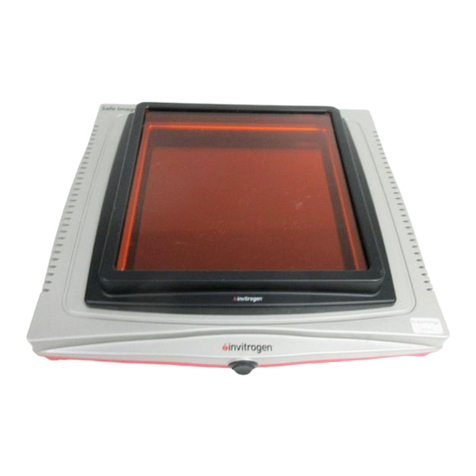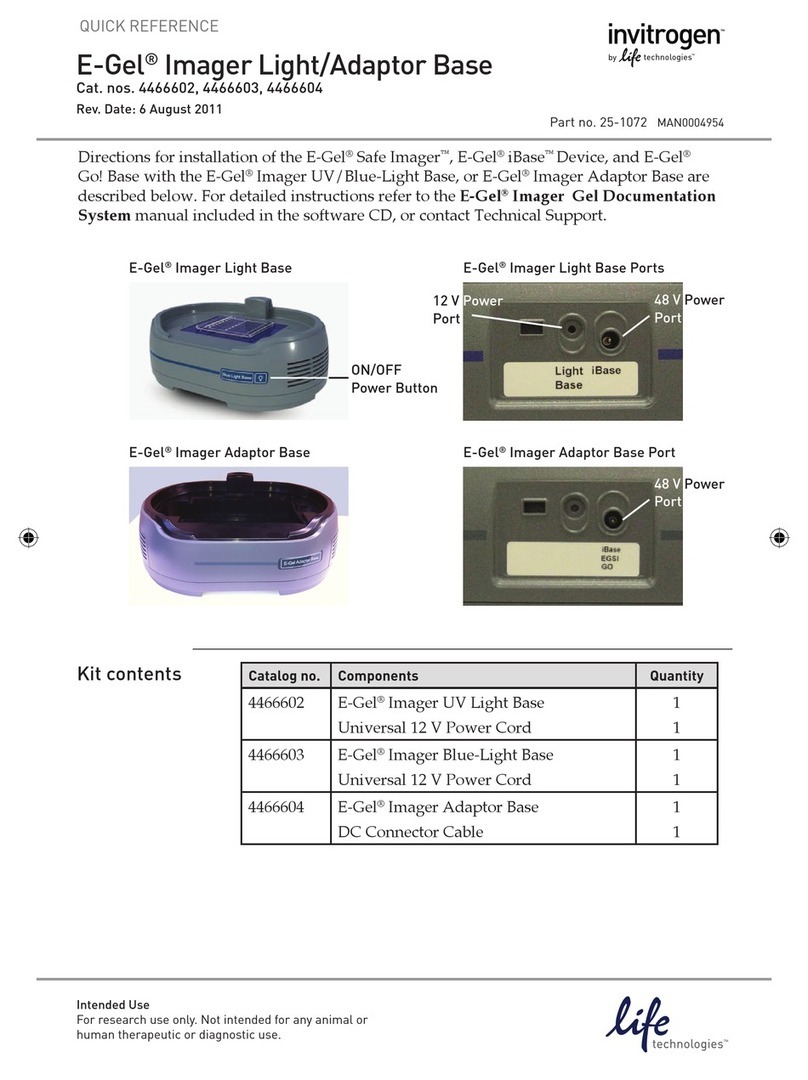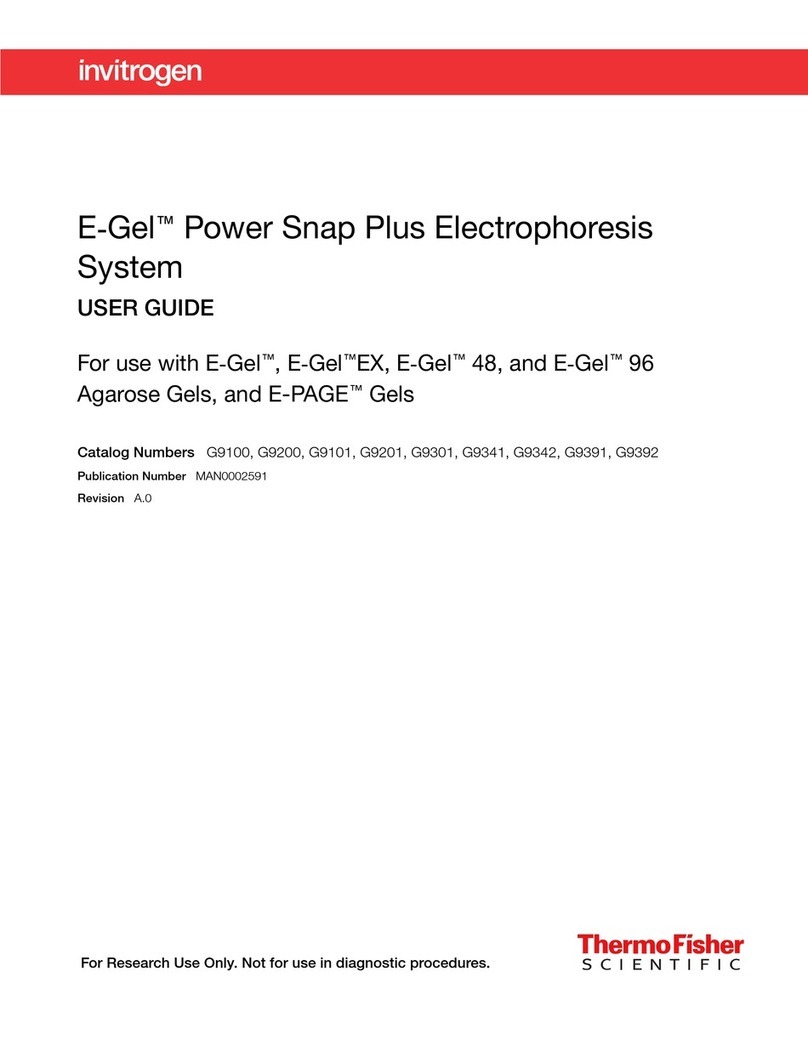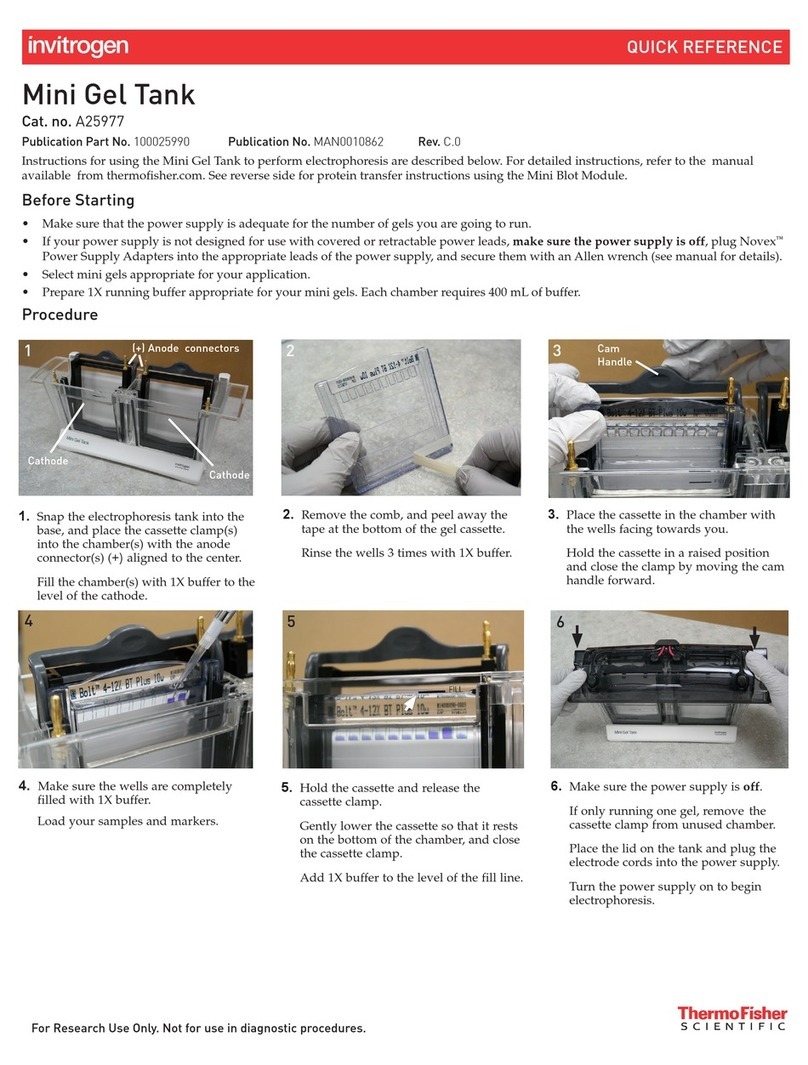
Note: When modifying an existing program, it is important to save before starting the program.
Only saved in-process programs will automatically resume after a power shutdown or outage.
Run the processor
1. Turn the power switch located at the back of the unit to the "On" position. The display will
illuminate and the moving parts will return to their home positions. After a few seconds, the home
screen will display.
2. Program or select your preferred western blot protocol (see “Program the processor” on page 7).
3. Fill the buer bottle in the back of the processor. Ensure that the hose hanging from the cap
reaches the bottom of the bottle. Leave the cap loose to allow air into the bottle as liquid is
pumped out.
For each wash, 10–75 mL of wash buer can be dispensed for mini gels and 10–150 mL for midi
gels. We recommend using 20–30 mL per wash for mini gels and 30–50 mL for midi gels. Ensure
there is enough wash buer to complete the protocol.
4. Flush the buer lines by selecting Flush from the home screen menu, then press Accept . Press
Fill until wash buer is dispensed from all nozzles. This may take several seconds. The wash
buer dispenses into the blot tray. Drain all wash buer from blot tray before use.
5. If using primary and secondary antibodies, two reagent tubes will be required for each blot being
processed. Check to ensure the foil on the bottom of the reagent tubes is not damaged. Screw
one reagent tube firmly and completely into the primary antibody position, noted with the number
1 toward the back of the slider. Next, screw the other reagent tube into the secondary antibody
position, noted with the number 2, just behind the buer dispensing nozzle.
6. Pipet the appropriate antibody solution into each reagent tube.
A standard-sized mini blot processed in a mini tray requires a minimum of 3.5 mL of each primary
antibody and secondary antibody solutions. A standard-sized midi blot processed in a midi tray
requires a minimum of 7.5 mL of each primary antibody and secondary antibody solutions.
7. Place blot(s) into the sample tray protein side up with protein lanes perpendicular to the tray gates.
If using a mini tray, which has a central divider, make sure the blot is on the same side of the
divider as the appropriate antibody reagent tubes.
8. Pour blocking buer of choice in to the tray. Use no more than 45 mL of blocking buer per mini
tray and no more than 90 mL of blocking buer for midi trays. Replace the tray cover and make
sure it is fully seated.
Tray Size Minimum Volume Maximum Volume
Mini 3.5 mL 45 mL
Midi 7.5 mL 90 mL
Chapter 1 Bandmate™Automated Western Processor
Operate the Bandmate™Automated Western Blot Processor 1
Bandmate™Automated Western Blot Processor User Guide 9
































